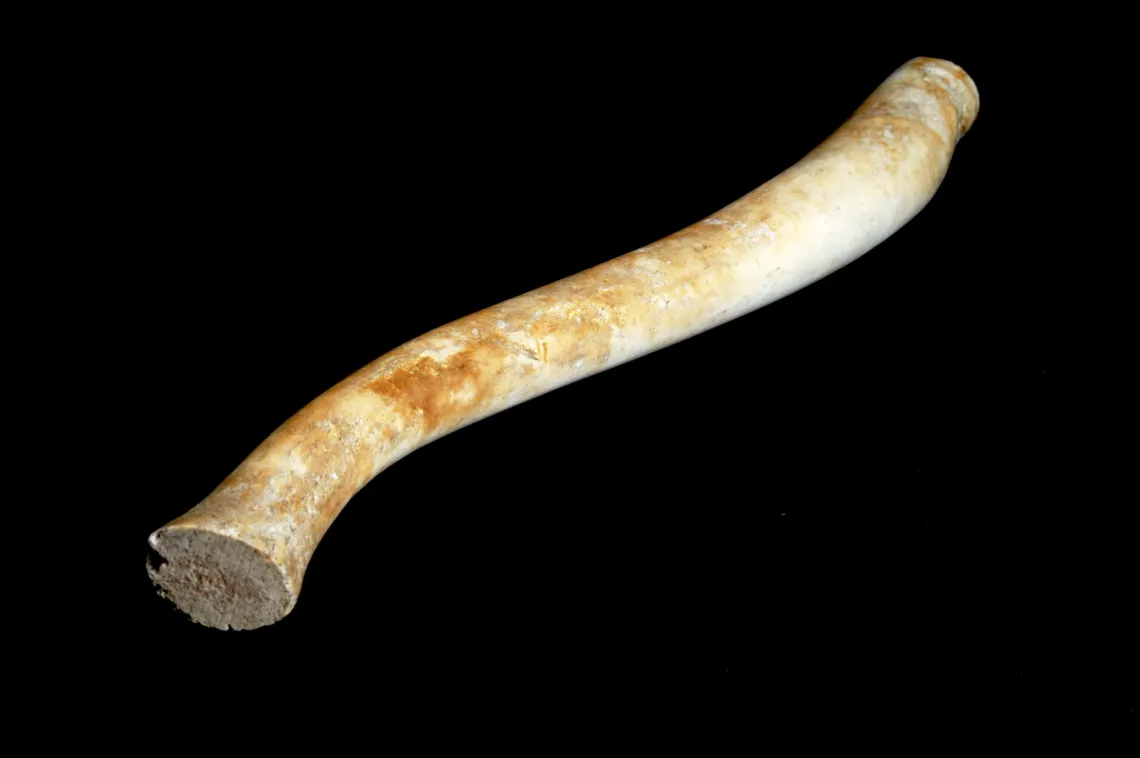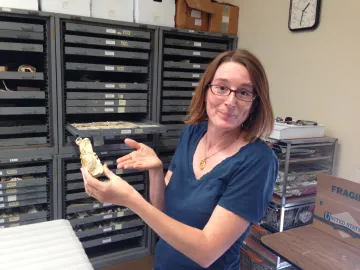
Probably 20th Century
Probably from Alaska
Walrus Bone
Length: 19.6 in. (49.7 cm.), Maximum Diameter: 1.7 in. (4.3 cm.), Maximum Circumference: 4.8 in. (12.1 cm.)
Gift of Brandon K. Mohns, 2008
(ASM Catalog No. Z-6448)
Oosik carving by Native Alaska artists became more widespread in the mid-20th century, but not for use by Native peoples. These oosiks, many elaborately carved and embellished, were bought by American tourists looking for “conversation pieces,” much to the amusement of Native carvers. Dorothy Jean Ray, an anthropologist working with Native carvers in Alaska in the 1950s and 1960s recorded the response of carvers to this strange interest, “[w]e don’t know why anyone wanted that old piece of bone, but if they want to pay ten dollars for it, it’s all right with us.”2
Visitors to Alaska in the mid-20th century began to commission Native carvers to create works that were “graphic” in nature, much to the embarrassment of Native artisans. Initially, carvers kept this aspect of their work a secret, hiding the objects, and completing sales transactions furtively. In the course of her research, Dorothy Jean Ray took photographs of several oosiks in the hands of two Native Alaska models. The models requested that their faces not appear in photographs showing the objects.3 Over time, oosiks came to be sold out in the open and, today they are sold over the internet as “rare Alaska Native art.”
I chose the oosik not just because it is an eye-catching specimen from our zooarchaeological teaching collections, but because of its relevance to an “anthropology of tourism” a topic that, while thought-provoking and pertinent, is rarely explored in museum interpretation. The oosik reveals the often complicated relationship between 20th-century American tourists, Native artisans, and perceptions of cultural meaning, relevance, and “authenticity.”4
This oosik is curated in the Arizona State Museum’s Stanley J. Olsen Laboratory of Zooarchaeology. It is used (delicately) for teaching and public outreach.
Footnotes
- Amy V. Margaris, Alutiiq Engineering: The Mechanics and Design of Skeletal Technologies in Alaska's Kodiak Archipeligo. Tucson, Unpublished PhD dissertation, Department of Anthropology, University of Arizona, p. 42.
- Dorothy Jean Ray, Artists of the Tundra & the Sea. Seattle: University of Washington Press, 1961, p. 131.
- Dorothy Jean Ray, Eskimo Art: Tradition and Innovation in North Alaska. Seattle: University of Washington Press, 1977, p. 48
- Many thanks to Dr. Deanna Kingston (Oregon State University) and Dr. Amy Margaris (Oberlin College) for their assistance.






